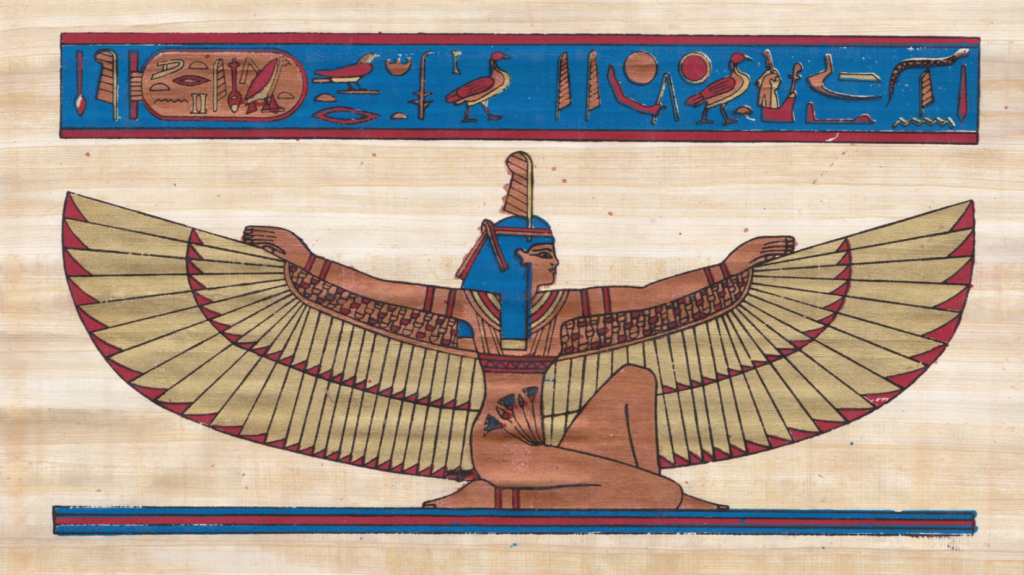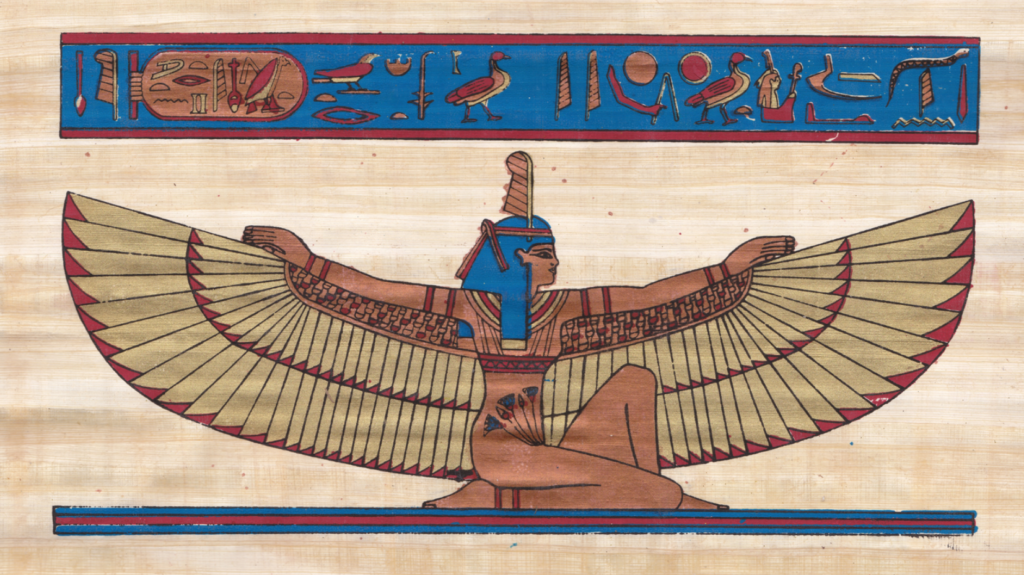
Source: Rosicrucian Digest, AMORC



For the Ancient Egyptian, the 42 Ideals of Ma’at represented the concept of balance and order; everything had its place in the world including culture, society, the seasons, and of course the Gods and Goddesses. Ma’at was the one that kept the stars in motion, the seasons changing and maintained the order of Heaven and Earth. The opposing force of this balance was known in ancient terms as “isfet” or chaos. Ancient Egyptians considered the desert beyond the Nile River to be chaotic; while the area close to the Nile was considered orderly. Together, these two forces brought balance to the world in which they lived and was an important part of everyday Egyptian life.
Ma’at is the Goddess of truth, justice, divine order, cosmic order and balance. She is depicted with wings of a vulture, her special animal, and the feather of truth in her headdress. She also carries an Ankh, the key of life, and sometimes a scepter. Ma’at can be traced as far back as the Old Kingdom (circa 3200 BCE). She is the daughter of Ra, sometimes referred to as the “eye of Ra.” Her equivalent and husband is Thoth, and her opposite is her brother Set. The Goddess Ma’at was most cherished by the rulers of ancient Egypt, and most were referred to as “Beloved of Ma’at.” Pharaohs would carry an effigy of Ma’at seated as a sign that he represented her regime of truth. She was the personification of the cosmic order and a representation of the stability of the universe.
Ma’at is almost always shown wearing the feather of truth on top of her head. The feather came to be the hieroglyph “Shu” meaning truth. According to the Papyrus of Ani and The Book of Coming Forth (Book of the Dead) every person would be judged before Ma’at to determine whether they were truly good and able to move on to the afterlife. The feather was weighed against their soul while they stated the 42 Negative Confessions.
The following are the 42 Ideals of Ma’at as the 42 Negative Confessions translated by E. A. Wallis Budge:
1. I have not committed sin.
2. I have not committed robbery with violence.
3. I have not stolen.
4. I have not slain men or women.
5. I have not stolen food.
6. I have not swindled offerings.
7. I have not stolen from God/Goddess.
8. I have not told lies.
9. I have not carried away food.
10. I have not cursed.
11. I have not closed my ears to truth.
12. I have not committed adultery.
13. I have not made anyone cry.
14. I have not felt sorrow without reason.
15. I have not assaulted anyone.
16. I am not deceitful.
17. I have not stolen anyone’s land.
18. I have not been an eavesdropper.
19. I have not falsely accused anyone.
20. I have not been angry without reason.
21. I have not seduced anyone’s wife.
22. I have not polluted myself.
23. I have not terrorized anyone.
24. I have not disobeyed the Law.
25. I have not been exclusively angry.
26. I have not cursed God/Goddess.
27. I have not behaved with violence.
28. I have not caused disruption of peace.
29. I have not acted hastily or without thought.
30. I have not overstepped my boundaries of concern.
31. I have not exaggerated my words when speaking.
32. I have not worked evil.
33. I have not used evil thoughts, words or deeds.
34. I have not polluted the water.
35. I have not spoken angrily or arrogantly.
36. I have not cursed anyone in thought, word or deeds.
37. I have not placed myself on a pedestal.
38. I have not stolen what belongs to God/Goddess.
39. I have not stolen from or disrespected the deceased.
40. I have not taken food from a child.
41. I have not acted with insolence.
42. I have not destroyed property belonging to God/Goddess
In recent years, a list of 42 Positive Ideals were written by a group of priestesses as a parallel or balance to the Negative Confessions.
As a follower of Aset, and Ma’at as an aspect of Aset, it is beneficial to repeat these 42 ideals in the morning and evening, as way to encourage these ideals in oneself.
The Ideals of Ma’at:

Source: https://iseumsanctuary.com/2017/10/11/the-laws-and-ideals-of-maat/